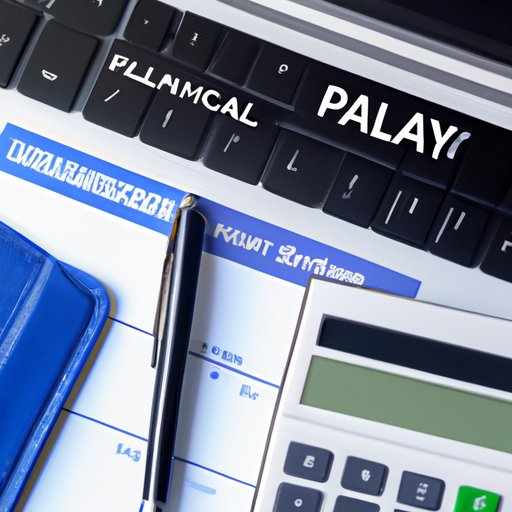
Introduction
As a small business owner, invoicing is a crucial part of your financial process. It’s essential to ensure that your clients pay you on time and help you maintain a steady cash flow. PayPal provides small business owners with a convenient and efficient way of sending invoices to their clients. In this article, we will provide you with all the information you need to know about sending invoices on PayPal.
A Step-by-Step Guide to Sending Invoices on PayPal
To send an invoice on PayPal, follow these simple steps:
Step 1: Logging into your PayPal account and selecting the “Invoicing” tab
The first step is to log into your PayPal account and select the “Invoicing” tab. This will take you to the invoicing dashboard, where you can create and manage your invoices.
Step 2: Creating a new invoice and filling out the necessary information
Next, you’ll need to create a new invoice by clicking on the “Create an invoice” button. This will take you to a page where you can fill out the necessary information for the invoice. You’ll need to add your client’s email address, item description, payment terms, and any other relevant information.
Step 3: Reviewing and sending the invoice to the client
After filling out all the necessary details, you can review the invoice and make any changes if needed. Once you’re happy with it, click on the “Send” button, and the invoice will be sent to your client.
Step 4: Tracking payment status and managing invoices in the PayPal dashboard
You can then track the payment status of the invoice on the PayPal dashboard. PayPal will notify you when your client has paid the invoice. You can also manage your invoices on the dashboard, including sending reminders for unpaid invoices, marking invoices as paid, and generating reports.
Invoicing on PayPal: Tips for Small Business Owners
While PayPal’s invoicing system is straightforward and user-friendly, there are some common invoicing mistakes that small business owners can make. Here are some tips to help you avoid these mistakes:
- Make sure you use clear and concise language in your invoices and that all the necessary details are included.
- Make sure you include payment terms and due dates so clients know when they need to make payment.
- Try to personalize your invoice by including your business branding to make it look more professional.
- Always follow up on unpaid invoices by sending reminders to your clients.
- Keep track of all your invoices and payments to ensure that you have a good understanding of your business’s financial health.
Mastering the Art of Invoicing on PayPal – A Comprehensive Guide
If you want to take your invoicing to the next level, PayPal provides many advanced features that can help you manage your invoicing even more efficiently. Here are some advanced features you can use:
- Recurring invoices: If you have clients who need to make regular payments, you can set up recurring invoices to save time.
- Partial payments: PayPal allows you to accept partial payments, which can be useful if you have clients who cannot pay the full amount in one go.
- Discounts and surcharges: PayPal allows you to offer discounts or surcharges to your clients, depending on the payment terms.
There are also various third-party software and integrations that can help you manage your invoices and streamline your payment processes even more. These include accounting software, payment gateways, and e-commerce platforms.
No More Confusion: How to Send Invoices on PayPal in 5 Simple Steps
If you need a quick reference for sending invoices on PayPal, follow these five simple steps:
- Log into your PayPal account and select the “Invoicing” tab.
- Click on the “Create an Invoice” button and fill out the necessary information.
- Review the invoice and make any changes if needed.
- Click on the “Send” button to send the invoice to your client.
- Track the payment status and manage your invoices on the PayPal dashboard.
Maximizing Your Efficiency: How to Send Invoices Quickly and Easily on PayPal
To maximize your invoicing efficiency, you can use some tips and tricks to reduce the time and effort you spend on invoicing:
- Save templates of your most common and repetitive invoices to save time.
- Set up automated reminders for unpaid invoices to improve cash flow and reduce the risk of overdue payments.
- Use third-party software and integrations to automate invoicing and streamline payment processes.
By maximizing your invoicing efficiency, you can free up more time to focus on your business’s core activities and improve your overall productivity.
Conclusion
By following the step-by-step guide and using these tips and tricks, you can effectively send invoices on PayPal and manage your invoicing process more efficiently. With PayPal’s advanced features and third-party integrations, you can take your invoicing to the next level and improve your business’s financial health.




